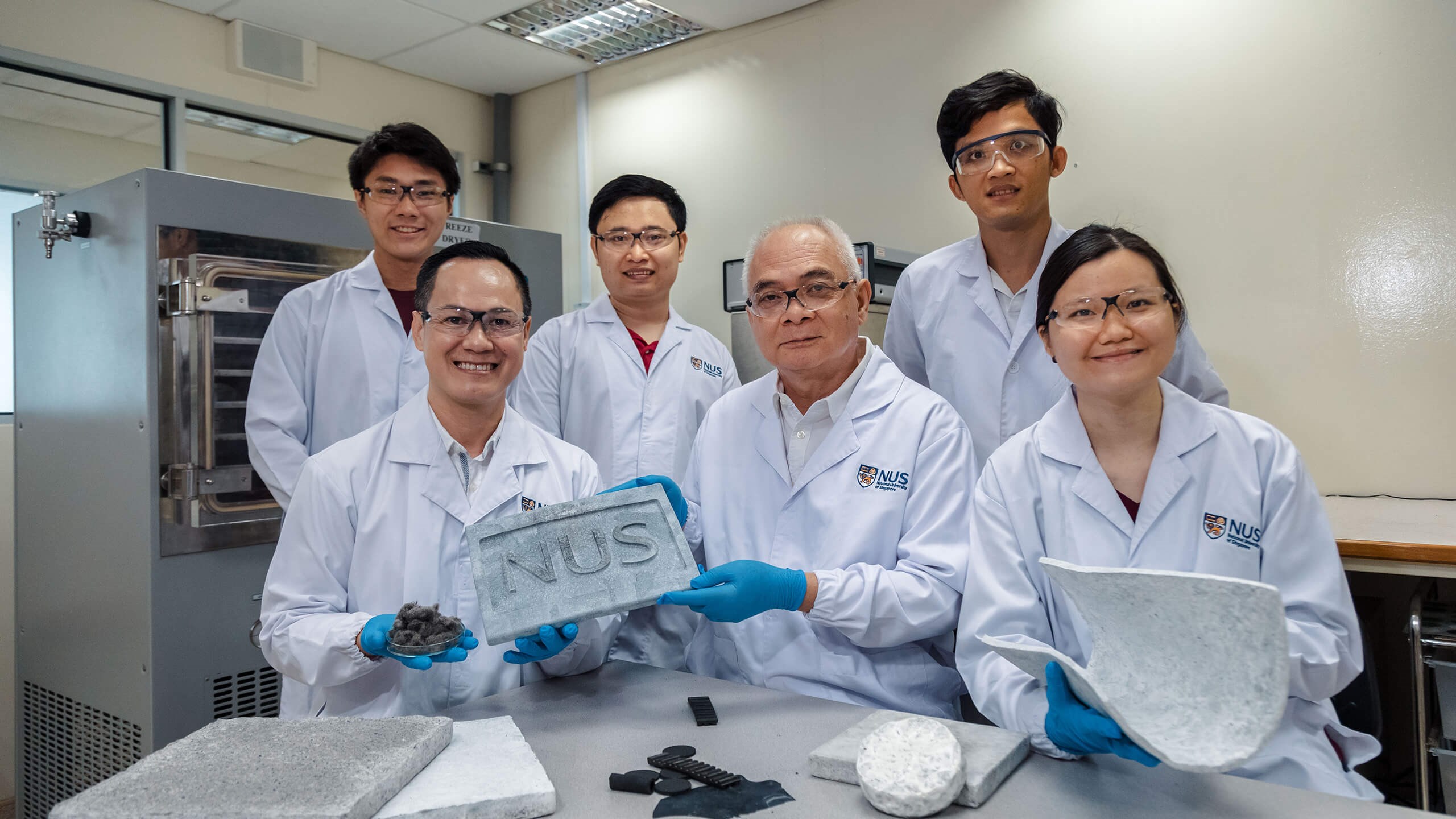First aerogels made using rubber

RESEARCHERS at Singapore’s National University of Singapore (NUS), have achieved a major technological breakthrough, producing the first aerogels made using rubber tyres. The novel fabrication method offers a route for upcycling of scrap tyres.
Globally, about 1bn scrap tyres are generated each year. These are highly durable and non-biodegradable, and only 40% are recycled. The remaining scrap is either incinerated (49%), generating toxic substances that pose health and safety concerns, or ends up in landfills (11%). In addition to landfills running out, there is the risk of consequential leachate causing environmental pollution.
Aerogels are ultralight porous, solid materials derived from gels, which have extremely low density and thermal conductivity. The rubber aerogels developed at NUS demonstrate extreme lightness, high absorbency, high durability – in contrast, most aerogels are extremely brittle and friable – and high efficiency at trapping heat and sound, offering potential use in applications such as oil absorption, thermal insulation, and sound insulation. The rubber aerogels are twice as absorbent as conventional absorbents such as polypropylene; 27% more efficient in sound absorption than commercial foam absorber of the same thickness; and, it has a high heat resistance, rubber aerogel that is 2.54 cm thick has a heat transfer limit equivalent to 25 glass window panes.
Furthermore, rubber aerogels can spring back into their original shape after compression, making them suitable as an insulation material for industrial purposes such as subsea systems, oil refineries, and industrial buildings. Additionally, when coated in methoxytrimethylsilane, the rubber aerogels become extremely water repellent and can be used to prevent moisture from corroding or damaging insulation equipment.
To produce the novel aerogels, recycled car tyres are firstly blended into finer fibres. These fibres are then soaked in water and a small amount of chemical cross-linkers, ie molecules that contain reactive ends capable of chemically attaching to specific functional groups on proteins or other molecules. The cross-linkers can diffuse and react with the fibre surfaces to generate a porous structure. The mixture of rubber fibres and eco-friendly solvents is then dispersed uniformly using a stirrer for 20 minutes. The suspension gel is then freeze-dried at -50°C for up to 12 hours.
The fabrication process is simple, cost-effective, and eco-friendly, said Duong Hai Minh, research team leader and Associate Professor of Materials at the Department of Mechanical Engineering Engineering at NUS.
Additionally, he notes that the process takes 12–13 hours to complete and costs less than S$10 (US$7) per sheet of rubber aerogel of 1 m3 and 1 cm thick. The time is an improvement from the two days required by the method published by the team in Colloids and Surfaces A: Physiochemical and Engineering Aspects. The current method not only requires less time but is also simpler. Furthermore, the process can easily be scaled for mass production, making rubber aerogels commercially attractive.
Professor Nhan Phan-Thien, senior member of the research team and Professor of Fluid Dynamics at NUS’ Department of Mechanical Engineering said: “Potential markets of aerogels are huge. For example, vehicle noise and thermal comfort are vital in vehicle designs – the global automotive heat and sound insulation solution markets are expected to reach US$3.2bn by 2022. In addition, the global oil-spill management market is expected to reach US$182.7bn by 2025.”
Duong said that converting waste rubber tyres into high-value aerogels could enhance the monetary incentive for recycling rubber and cut down rubber waste.
According to Duong the team is looking forward to realising positive environmental impact of the novel aerogels by working with Mapletree Investments and industry partners to commercialise and scale up the novel technology. Mapletree is a real estate development, investment, and capital and property management company headquartered in Singapore. The company donated S$155,000 (US$108,216) to NUS to boost research efforts of the team and raise awareness about recycling.
Using the contribution from Mapletree, the team will conduct further studies to enhance the performance of the rubber aerogels, and explore other applications as well as using other types of waste materials to convert into aerogels
The researchers have filed a patent for their technology.
Colloids and Surfaces A: Physiochemical and Engineering Aspects: http://doi.org/ggncpv
Correction
This article was edited on 08 April to correct the production cost per sheet of rubber aerogel (1 m3 and 1 cm thick) from US$10 to S$10 (US$7)
Recent Editions
Catch up on the latest news, views and jobs from The Chemical Engineer. Below are the four latest issues. View a wider selection of the archive from within the Magazine section of this site.




